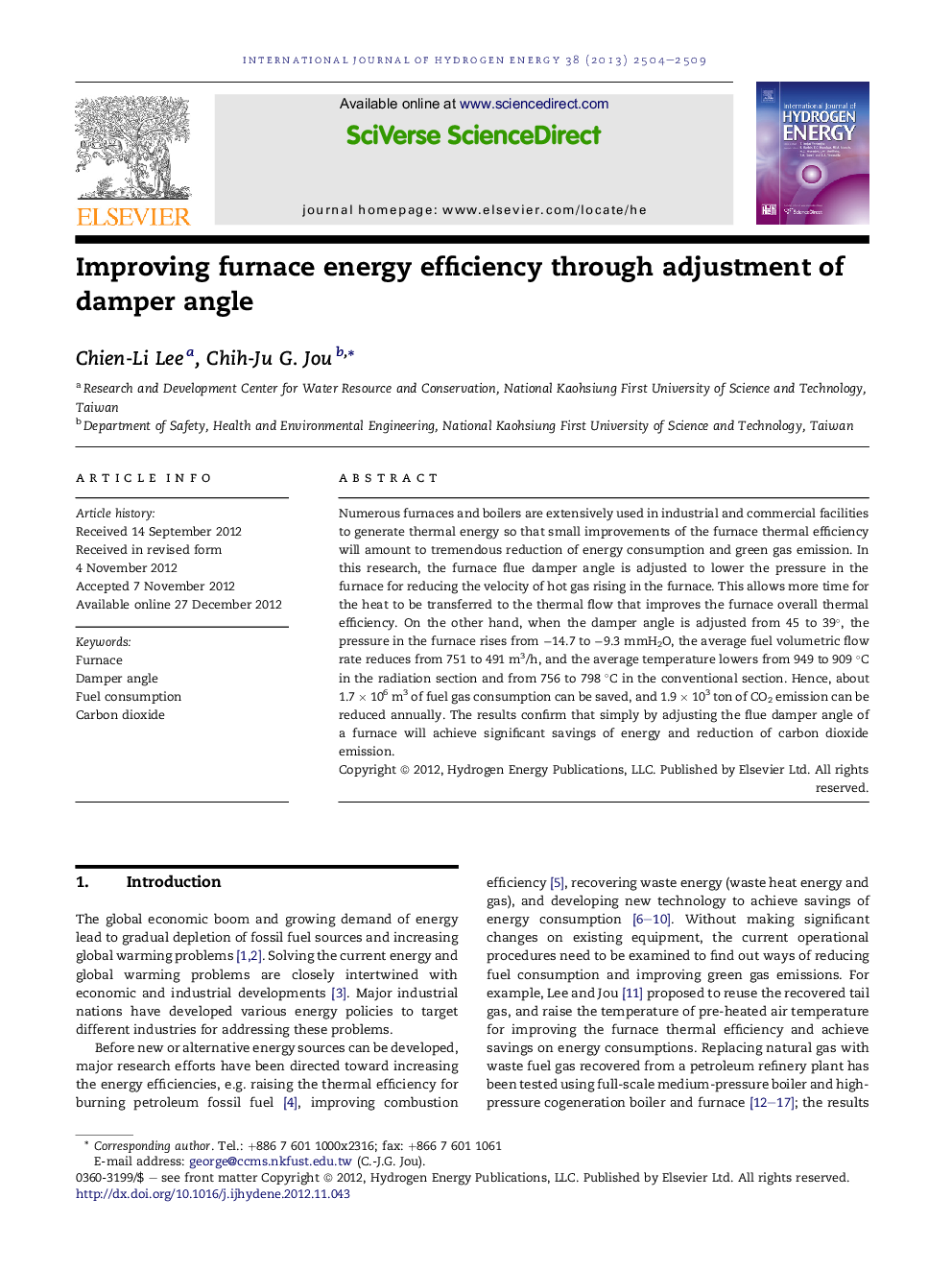| Article ID | Journal | Published Year | Pages | File Type |
|---|---|---|---|---|
| 1274116 | International Journal of Hydrogen Energy | 2013 | 6 Pages |
Numerous furnaces and boilers are extensively used in industrial and commercial facilities to generate thermal energy so that small improvements of the furnace thermal efficiency will amount to tremendous reduction of energy consumption and green gas emission. In this research, the furnace flue damper angle is adjusted to lower the pressure in the furnace for reducing the velocity of hot gas rising in the furnace. This allows more time for the heat to be transferred to the thermal flow that improves the furnace overall thermal efficiency. On the other hand, when the damper angle is adjusted from 45 to 39°, the pressure in the furnace rises from −14.7 to −9.3 mmH2O, the average fuel volumetric flow rate reduces from 751 to 491 m3/h, and the average temperature lowers from 949 to 909 °C in the radiation section and from 756 to 798 °C in the conventional section. Hence, about 1.7 × 106 m3 of fuel gas consumption can be saved, and 1.9 × 103 ton of CO2 emission can be reduced annually. The results confirm that simply by adjusting the flue damper angle of a furnace will achieve significant savings of energy and reduction of carbon dioxide emission.
► Heat transfer radiation and convection to produce thermal gas flow in the furnace. ► Flue damper angle affect the hot gas upward velocity in the furnace chamber. ► Pressure furnace affect the residence time of the heat energy in the furnace. ► Adjusting flue damper of a furnace will achieve significant savings of energy.
